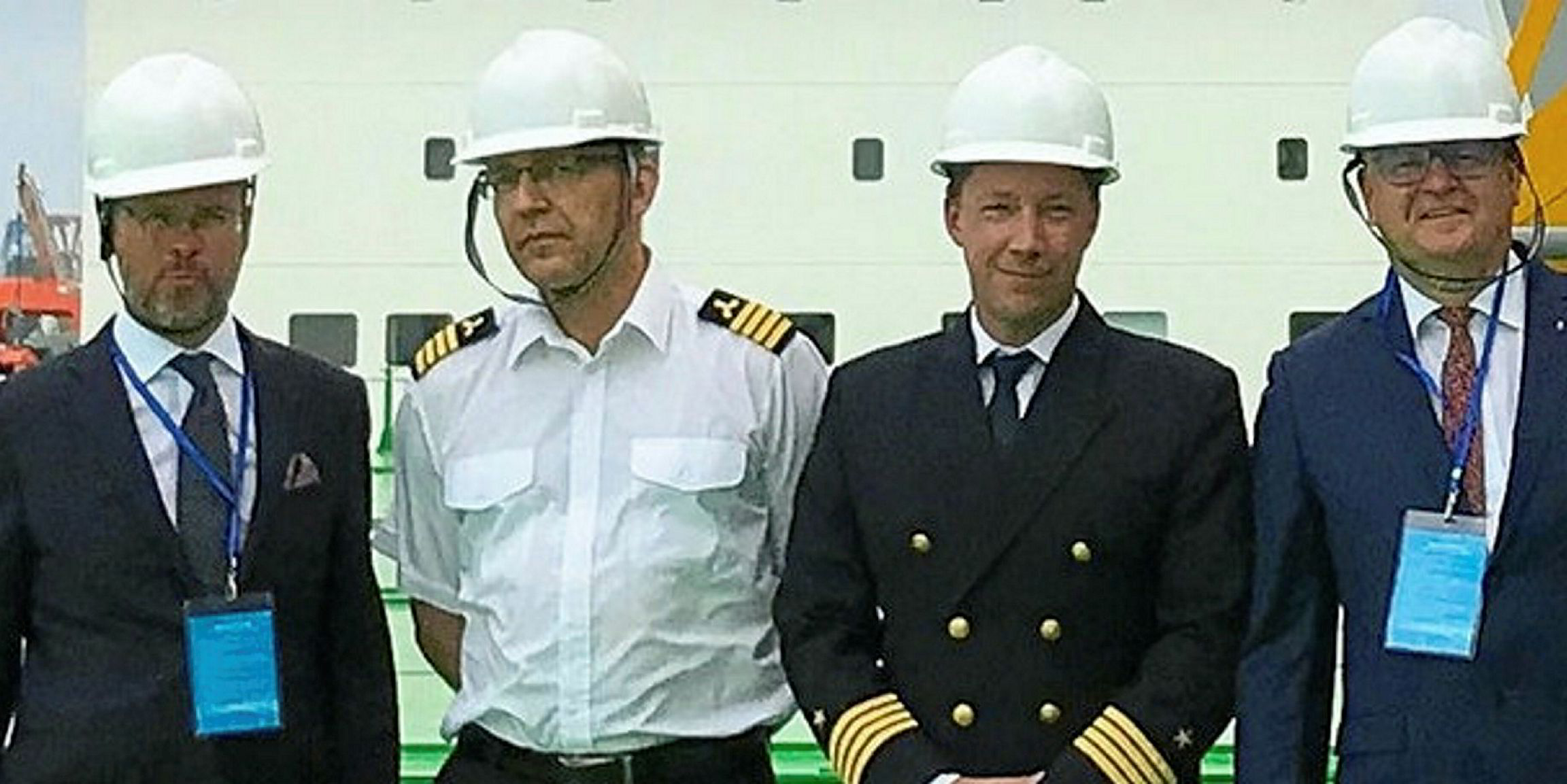Vessel and cargo-handling machinery giant MacGregor is not the most obvious candidate to help shipowners cut their carbon footprint, but it says its digital developments can do just that.
MacGregor’s Cargo Boost system, which can increase the capacity of container ships by around 10%, thereby saving a similar level of fuel and therefore emissions, secured a record 50-plus contracts in 2021.
The service, developed by the division of Finland’s Cargotec group, has been applied to more than 90 container ships since inception seven years ago to improve the design of newbuilds and upgrade existing vessels.
The first ship to undergo cargo Boost was the United Arab Shipping Co’s 18,800-teu Barzan that was being built by Hyundai Samho Heavy Industries’ Mokpo shipyard in 2015.
Since then, Mediterranean Shipping Co has become an important customer, notably contracting six 16,000-teu ships it operates for retrofit work during their first major dry dockings in 2020.

MacGregor president Leif Bystrom said deals signed last year will go ahead during 2022 in some cases, but other owners are likely to defer until 2023 to take advantage of currently booming container shipping markets.
That decision is something of a play-off between not taking ships out of operation while times are good and being able to benefit from carrying more containers while they are earning such high freight rates.
Bystrom likens the method of boosting boxships’ container-carrying efficiency to putting a fifth seat in a four-passenger car and then fine-tuning the gearbox to ensure it can do the same miles per gallon of fuel consumption.
The service starts with a ship appraisal and can vary from minor technical or documentary updates to completely changing the container lashings on board.
Each upgrade is tailored to the ship’s trading route. Bystrom stressed that safety, the integrity of cargo lashings and structural issues, all of which are approved by class, are top of the agenda.
MacGregor’s base model assumes 10 ships servicing an Asia to Los Angeles route, each with a 13,000-teu nominal capacity that translates to an actual ability to carry 11,800 teu of loaded boxes. Their total emissions from sailing the route six times a year over a 10-year period are calculated at 945,000 tonnes of CO2 equivalent.
Implementing Cargo Boost upgrades would increase the ships’ actual carrying capacity to nearly 13,000 teu and eliminate the need for a 10th vessel to carry the same amount of containers. That would cut total emissions by 9.5% to 855,000 tonnes of CO2e.
The average “payback time is less than one-and-a-half years”, Bystrom said.
The Cargo Boost system has not encountered any issues like the recent spate of container losses that have affected several big boxships in rough weather, and Bystrom said it should make vessels more robust in withstanding heavy conditions.
“MacGregor sits on an expertise level which is higher than the shipyards’ [as to] how the vessel behaves with a certain number of containers, and what happens when we rearrange this.”

MacGregor’s developing digital portfolio has included installation of its predictive maintenance data system for ships’ cranes, named OnWatch Scout, to 10 vessels. It took orders for a further 50 in 2021.
The system signals potential problems, much like a warning light on a car dashboard, said president Leif Bystrom.
Early takers were offshore and merchant vessel operators, but interest has switched more to cargo shipping with recent orders, including Greek operator Load Line Marine early last year, as it has become more difficult for engineers to be sent to ships to undertake repairs during the pandemic.
It has also automated unloading of coal cargoes from two LNG-powered handysize bulkers operated by Finnish company ESL Shipping – the 25,600-dwt sisters Haaga and Viikki (both built 2018).
Technical problems affected the cranes in 2019, but MacGregor repaired the systems under warranty.






